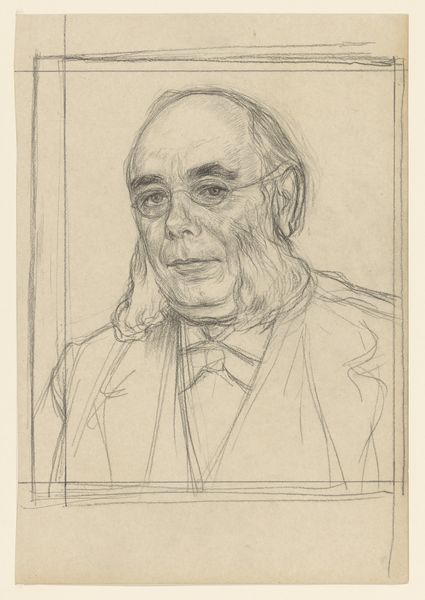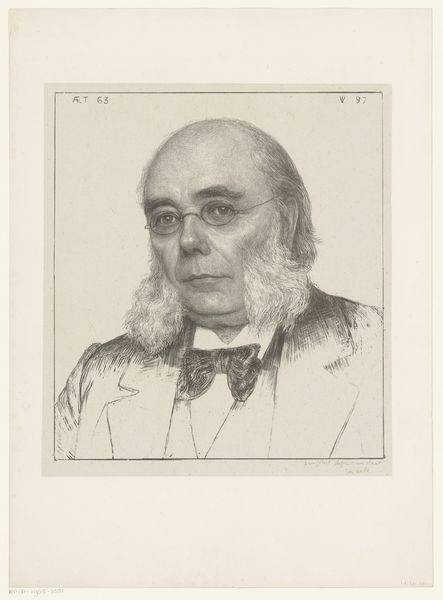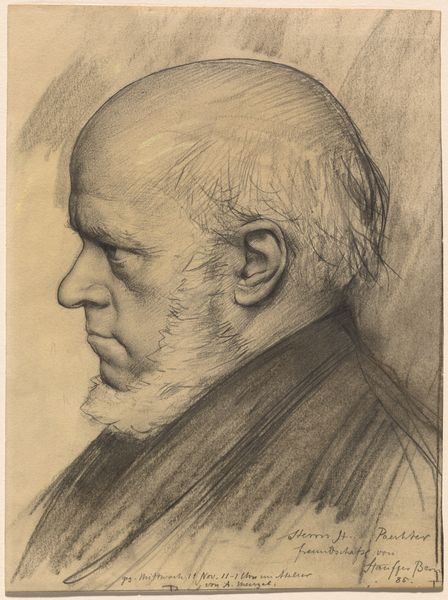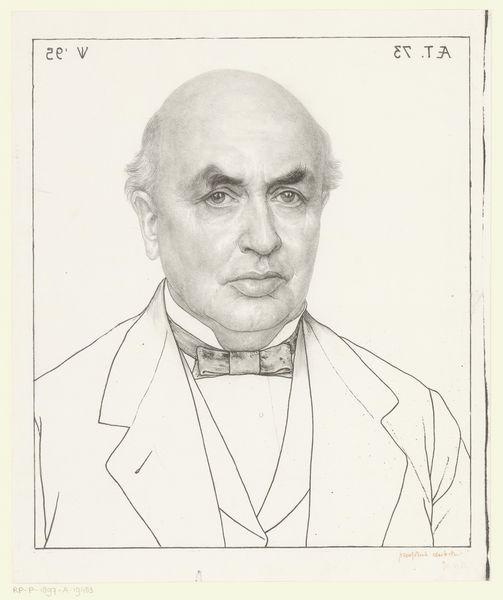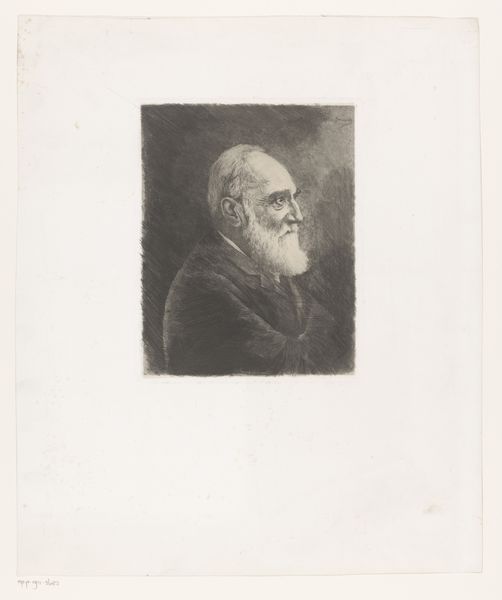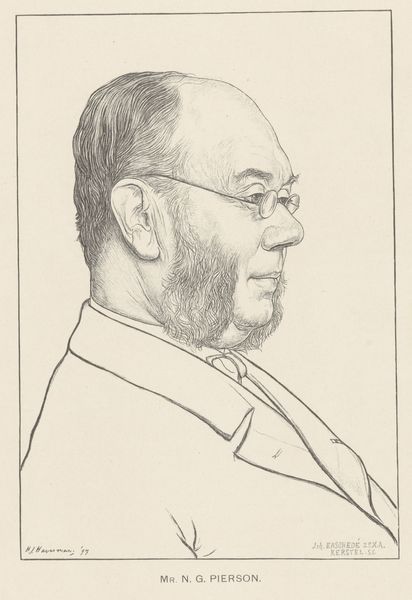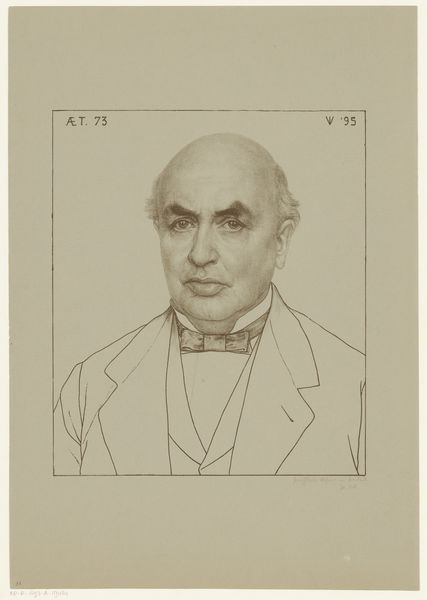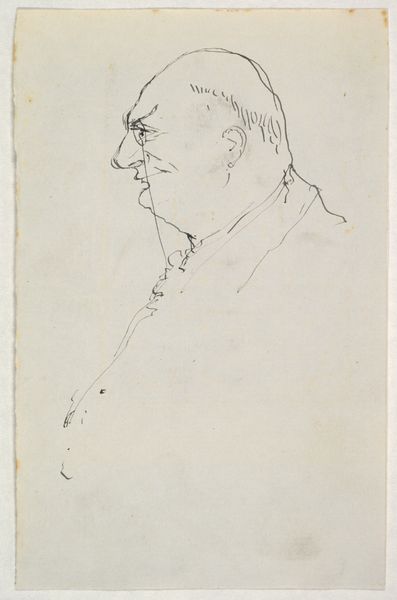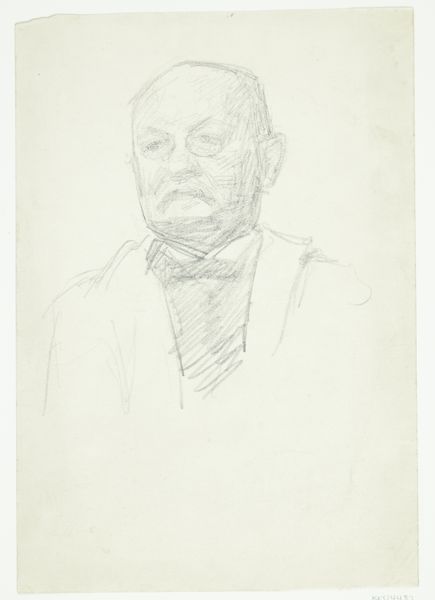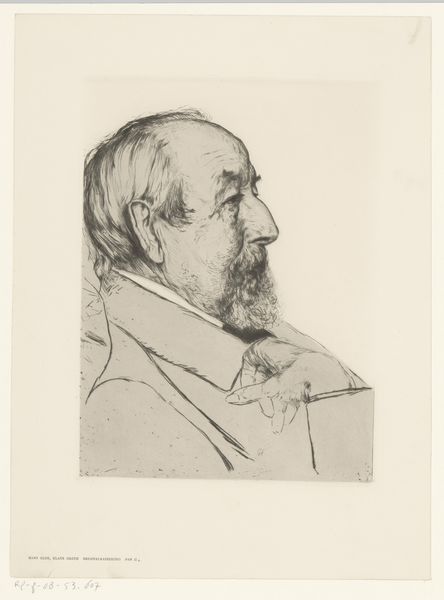
drawing, pencil
#
portrait
#
pencil drawn
#
drawing
#
toned paper
#
facial expression drawing
#
light pencil work
#
pencil sketch
#
personal sketchbook
#
portrait reference
#
pencil drawing
#
pencil
#
portrait drawing
#
pencil work
Dimensions: height 409 mm, width 275 mm
Copyright: Rijks Museum: Open Domain
Curator: Welcome. Before us is a work by Jan Veth, titled "Portret van dr. H. Pierson," likely created between 1874 and 1925. It’s a drawing executed in pencil on toned paper. Editor: There's a lovely softness to it. Despite being a pencil drawing, it feels less rigid, more contemplative than many portraits I've seen. Curator: Precisely. Let's consider Veth's choice of medium. Pencil, often associated with sketches and preliminary studies, elevates this piece by drawing our attention to the immediacy of the creative process. How does the texture of the toned paper affect the distribution of light, and how does Veth's mark-making serve its mimetic goals? Editor: I find myself focusing on the expression in Pierson’s eyes—direct, but also carrying a weight. It's really striking how much personality comes through, especially given the simplicity of the technique. It makes one wonder about their relationship. Curator: Jan Veth was known as both an artist and critic. It’s crucial to consider how the materials themselves, the mass production of pencils for example, relates to Veth's economic position in the art world. The readily available medium reflects on Pierson’s status as well. He was, after all, a prominent Dutch theologian and intellectual of his time. Editor: You're right; there's a compelling social aspect to Veth’s choice. Still, the crosshatching, the delicate shading, it contributes significantly to the portrait’s depth and almost evokes a photographic realism, even if its created entirely out of minimal lines. The formal composition and structural features makes it compelling in the history of pencil portraiture. Curator: But how does that reading overlook the accessibility of drawing as a skill and its connection to labor practices within artistic workshops? Veth, through this medium, flattens distinctions; perhaps deliberately engages with an idea of bourgeois egalitarianism, depicting an elite figure using rudimentary tools. Editor: I think, even while acknowledging those social contexts, there's an undeniable beauty to the simplicity, wouldn't you agree? It feels intimate. Curator: Yes, I appreciate how studying these works offers a view into how artistry, labour, material realities, and the artist's perspective all coincide and affect interpretation. Editor: I'll take with me the skill employed by Veth to produce light and depth with humble materials, achieving more than just the representation of a subject.
Comments
No comments
Be the first to comment and join the conversation on the ultimate creative platform.
